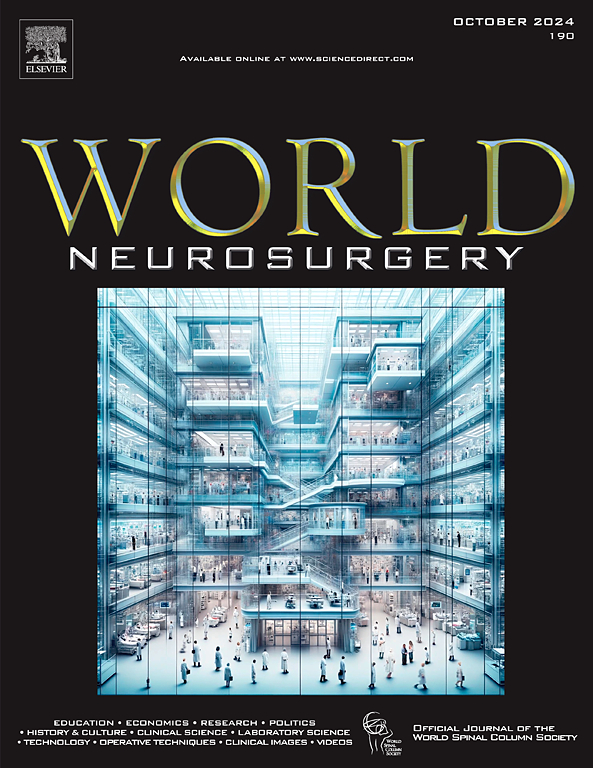Clinical Efficacy of Biportal versus Uniportal Endoscopic Discectomy for Far Lateral Lumbar Disc Herniation: A Retrospective Study Analysis
IF 1.9
4区 医学
Q3 CLINICAL NEUROLOGY
引用次数: 0
Abstract
Objective
This study aimed to compare the clinical efficacy and safety of percutaneous transforaminal endoscopic discectomy (PTED) and unilateral biportal endoscopy (UBE) in treating far lateral lumbar disc herniation (FLLDH).
Methods
A retrospective analysis was performed on 42 patients treated for FLLDH at our hospital between January 2020 and October 2023, comprising 17 UBE cases and 25 PTED cases. Patients were followed up for six months. The study compared operation time, hospital stay, cross-sectional area of the intervertebral foramen, and clinical efficacy using a visual analog scale (VAS), the Oswestry Disability Index, and modified Macnab criteria.
Results
Both surgical procedures were successful. The UBE group had a significantly shorter operation time than the PTED group (108.0 ± 35.3 vs. 84.3 ± 25.4 minutes; P = 0.023). There were no significant differences in hospitalization periods or cross-sectional area of the intervertebral foramen between the groups. The UBE group had better VAS scores for back pain at 1-day (2.72 ± 0.84 vs. 2.12 ± 0.70, P = 0.015) and 1-month (1.76 ± 0.66 vs. 1.29 ± 0.77, P = 0.047) postoperation compared to the PTED group. However, both groups showed significant improvements in VAS and Oswestry Disability Index scores after surgery, with no statistically significant difference at the final follow-up. The modified Macnab criteria at the final follow-up demonstrated similar good-to-excellent satisfactory outcomes in both the PTED and UBE groups, at 92% and 94.1%, respectively.
Conclusions
Both UBE and PTED techniques are clinically effective for treating FLLDH, with UBE having a shorter operation time than PTED.
求助全文
约1分钟内获得全文
求助全文
来源期刊

World neurosurgery
CLINICAL NEUROLOGY-SURGERY
CiteScore
3.90
自引率
15.00%
发文量
1765
审稿时长
47 days
期刊介绍:
World Neurosurgery has an open access mirror journal World Neurosurgery: X, sharing the same aims and scope, editorial team, submission system and rigorous peer review.
The journal''s mission is to:
-To provide a first-class international forum and a 2-way conduit for dialogue that is relevant to neurosurgeons and providers who care for neurosurgery patients. The categories of the exchanged information include clinical and basic science, as well as global information that provide social, political, educational, economic, cultural or societal insights and knowledge that are of significance and relevance to worldwide neurosurgery patient care.
-To act as a primary intellectual catalyst for the stimulation of creativity, the creation of new knowledge, and the enhancement of quality neurosurgical care worldwide.
-To provide a forum for communication that enriches the lives of all neurosurgeons and their colleagues; and, in so doing, enriches the lives of their patients.
Topics to be addressed in World Neurosurgery include: EDUCATION, ECONOMICS, RESEARCH, POLITICS, HISTORY, CULTURE, CLINICAL SCIENCE, LABORATORY SCIENCE, TECHNOLOGY, OPERATIVE TECHNIQUES, CLINICAL IMAGES, VIDEOS
 求助内容:
求助内容: 应助结果提醒方式:
应助结果提醒方式:


